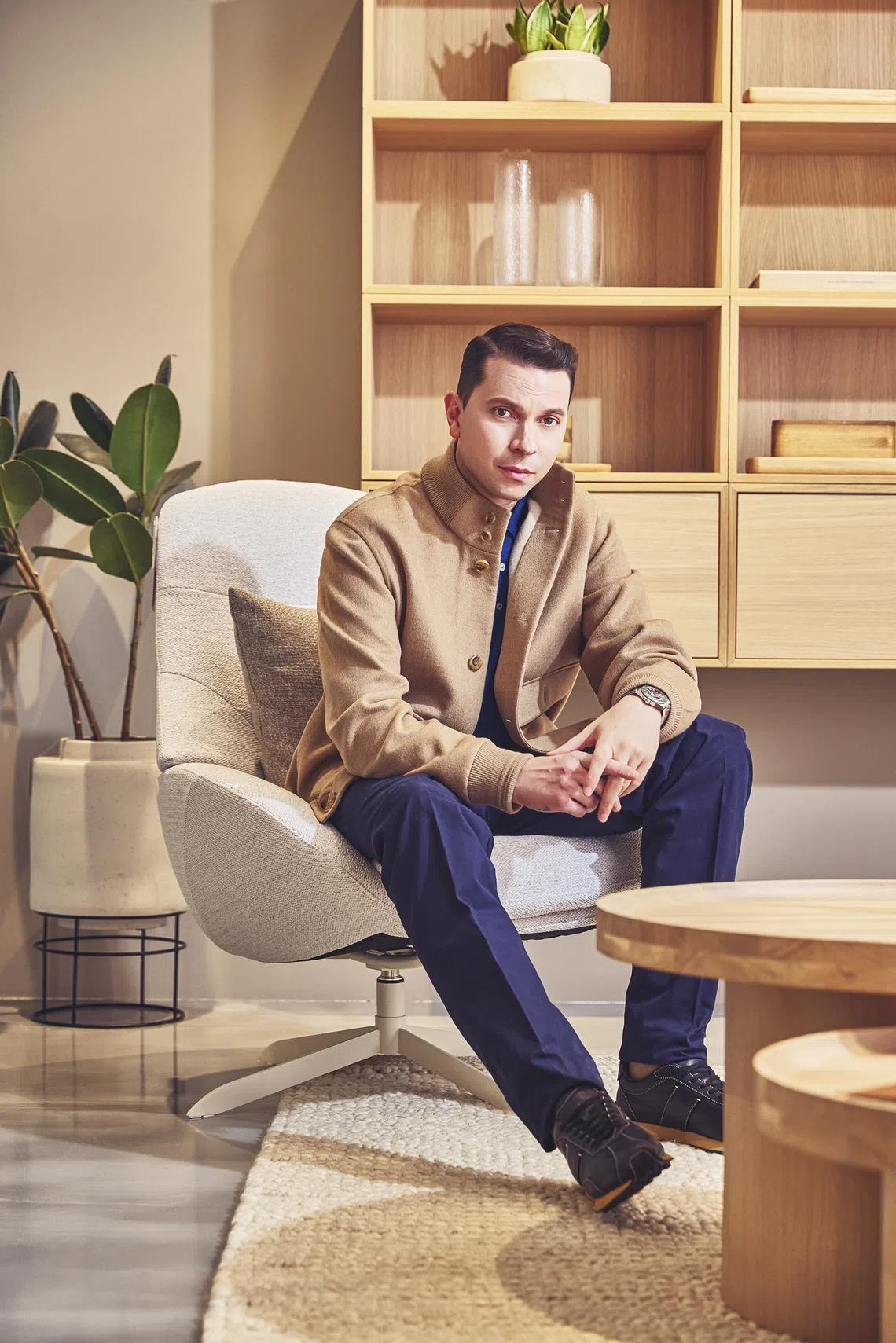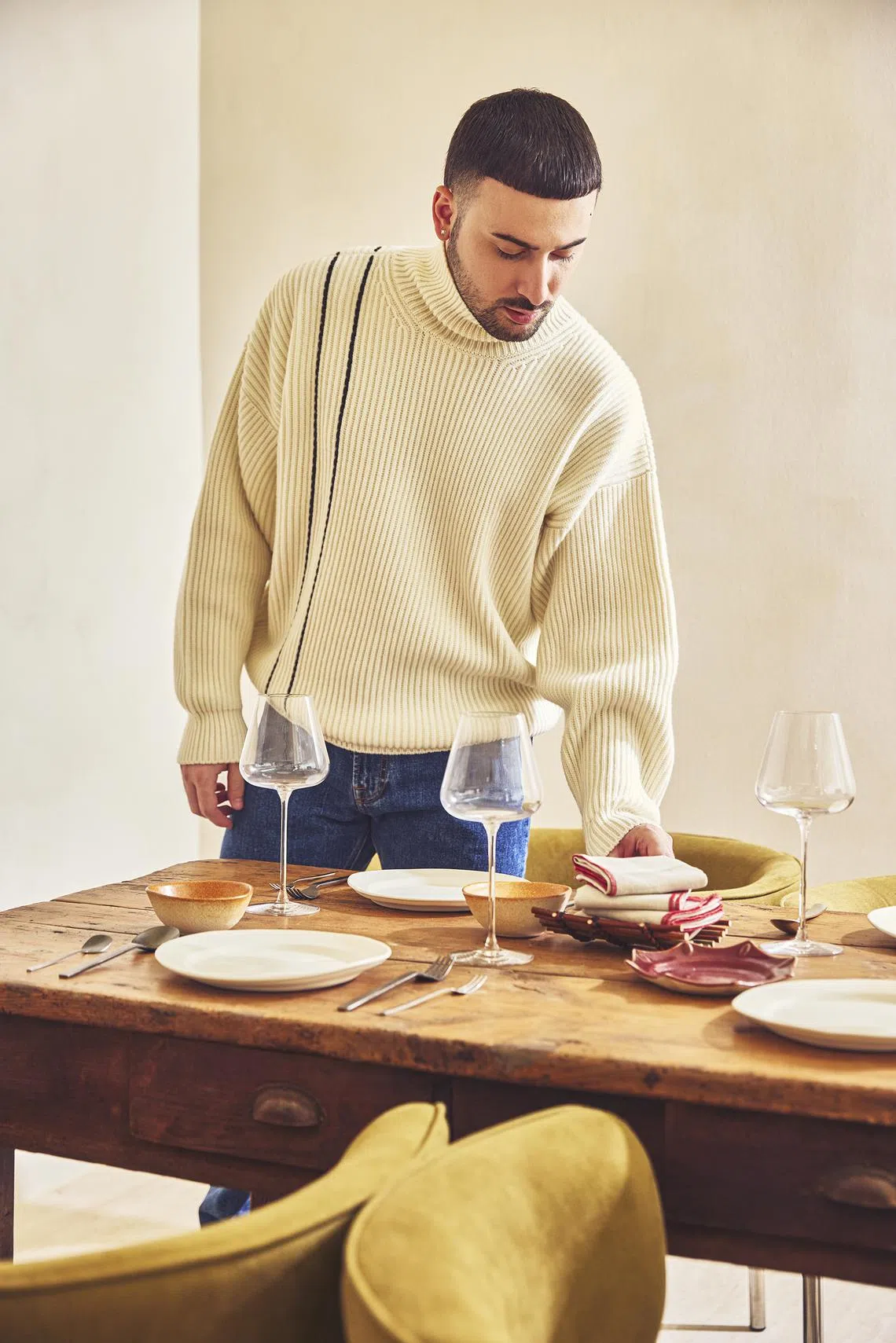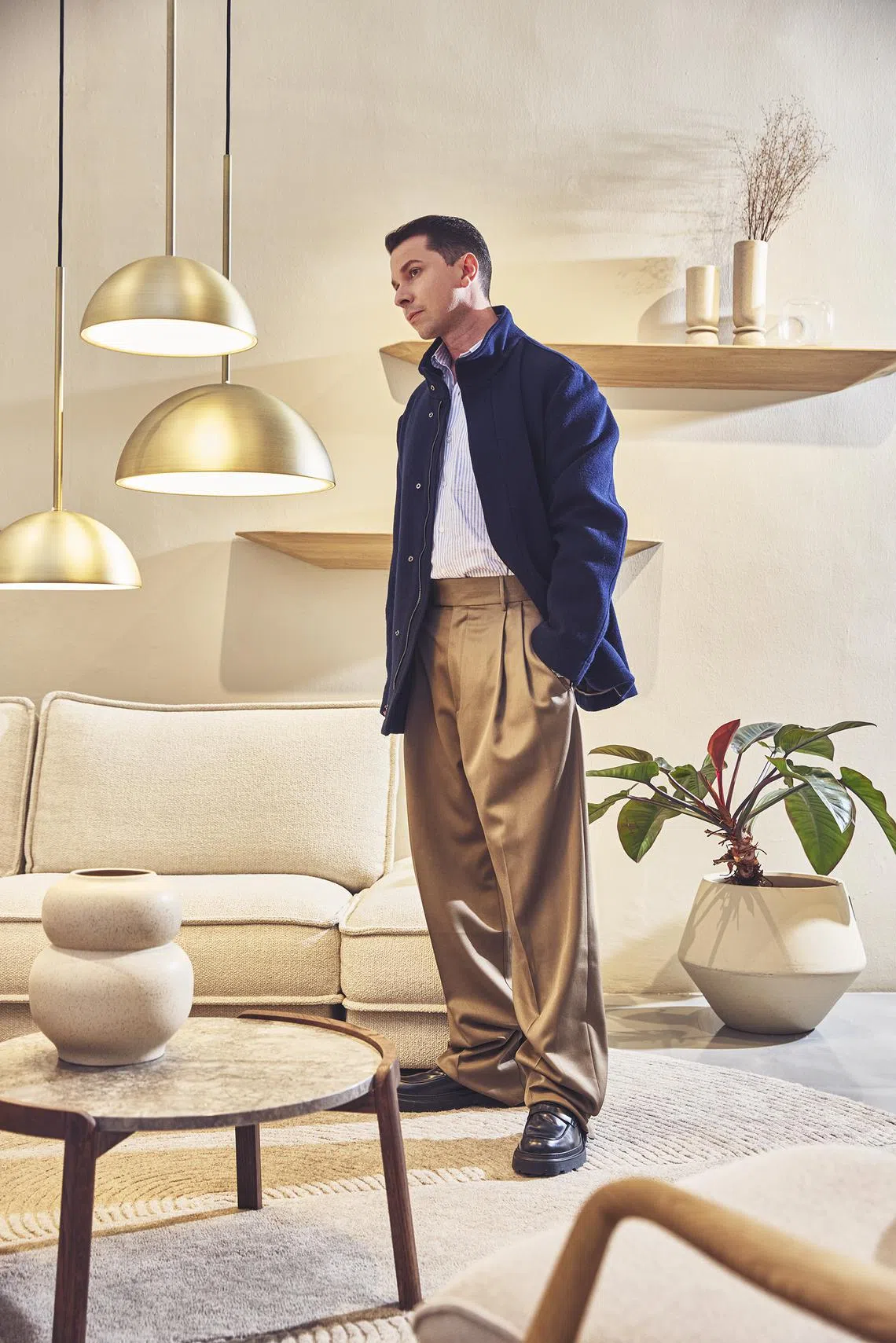Living la dolce vita
Although chefs Daniele Sperindio and Mirko Febbrile feel at home in Singapore, they’re still very much Italians at heart. From their kitchens to their wardrobes, this is how they personify the Italian way of life
AS ANY TRAVELLER TO ITALY – or anyone familiar with Italian culture, for that matter – will tell you, food is so much more than mere sustenance in the land of pizza and pasta. Food and hospitality are core to Italian culture. Together, they’re a celebration of life and a lifestyle that puts enjoyment, family and tradition front and centre.
Perhaps no one understands this better than Italian chefs, especially those who have uprooted themselves from the motherland to spread the gospel of Italian cuisine and lifestyle to other shores. After all, distance has a way of allowing people to view and appreciate their own culture from an outsider’s perspective.
To glean the essence of this enviable way of life, we rounded up two of Singapore’s leading Italian transplants, Daniele Sperindio and Mirko Febbrile, to pick their brains. “The key point of the Italian lifestyle is about enjoying life, or trying to find a way to enjoy life,” says Sperindio.
Febbrile adds: “To us, cuisine is culture. Every dish has its heart in Italian (traditions) – we could be sourcing from the region, drawing inspiration from dishes familiar to the Italian vernacular, or using methods that are employed in Italian cooking.”
Sperindio, 37, is chef-owner of the one-Michelin-starred Art di Daniele Sperindio at National Gallery. He has spent the past 13 years in Singapore in a career that has included head chef roles in Tippling Club, Atlas Bar and Il Lido Group before stepping out on his own.
Febbrile, 32, has lived in Singapore for nine years, and led Il Lido Group’s Braci to its first Michelin star in 2017. He left the group to open Fico, a Puglian-style restaurant in East Coast Park, in 2022, in a joint venture with the Lo & Behold Group.
In late September, Febbrile will debut Somma, another project with the group at creative cluster New Bahru. While Fico is styled after rustic masseria (fortified farmhouses found in Puglia) and offers casual dining options, Somma presents a polished, globally influenced Italian affair with tasting menus and modern cocktails.
“Hospitality is at the heart of everything we do. We design the entire dining experience to facilitate our Italian values of warmth and community,” says Febbrile.
Maintaining an Italian identity
Both Sperindio and Febbrile acknowledge that living and working in Singapore is a tremendous opportunity, but it’s not without its challenges. Sperindio alludes to the local hustle culture and businesslike environment, which can be stressful. “I sometimes forget to enjoy life, and that’s when I try to bring myself back to the Italian way of living.”
This, for Sperindio, means taking time out to enjoy the small things, like watching sunsets or savouring a glass of wine. In an industry as creative as F&B, Sperindio’s “aha” moments happen when he is relaxed and his mind is allowed to wander.

Febbrile, too, has come to appreciate the small things. “Growing up in the Puglian countryside, my life always revolved around family and community where I learnt that some of the greatest luxuries are the simplest things in life,” he explains. “The familial bonds, appreciation for good food and wine, the conviction to personal authenticity – that, to me, is the Italian lifestyle.”
Despite having travelled the world, both chefs have retained their cultural identities. “Having (been away from) Italy for almost a decade and with my new home in Singapore, I’ve had the privilege to see the world and amass food, drink, and cultural experiences that have shaped who I am today. But I’ve always held on tightly to my roots,” says Febbrile.
“I feel that you can take the Italian out of Italy, but not the Italy out of the Italian,” quips Sperindio. Art for him became a means of reconnecting with his heritage, after several years working in French, Japanese and other international restaurants. For example, there’s a dish that represents his personal and culinary heritage: La Superba (“the superb” in Italian), which was the nickname for his hometown of Genoa on the Ligurian coast.

The dish consists of three elements. First there’s the pasta – taglierini, similar to tagliatelle and typical of the Piedmont region where Sperindio spent some time growing up. Then there’s the stockfish infusion, made of air-dried cod and typically used as a stew base, but here it’s been transformed into a clean, clear sauce.
Lastly, there’s a dumpling stuffed with aged duck ragu. The duck represents the Genoan countryside while the dumpling symbolises the mountains surrounding the city. In an ode to his experiences in Asia, Sperindio serves the dumpling like a xiao long bao, with its contents in a broth.
Over at Somma, Febbrile will be serving a dish that perfectly encapsulates his journey from Italy to Singapore. Maltagliati, burnt wheat and wild boar ragu is a Puglian spin on one of his favourite local comfort foods, mee hoon kueh.
He explains: “Traditionally, maltagliati is made from the leftover scraps of other handmade pasta. To the pasta dough, we combine burnt wheat – a traditional flour with historical significance to Puglia – as well as rice flour, which provides a nice, chewy texture and is such a staple in Asian dishes. It brings a sense of place. The chewy, nutty, hand-pulled pasta is cooked with wild boar ragu and mani chye (sweet leaf).”
Cuisine, couture and culture
Fashion and style are as intrinsic to the Italian identity as food and hospitality are. In a sense, food and fashion are intertwined. “Those are two strong elements of our heritage,” explains Sperindio. “Being Italian means dressing up, meeting people, and eating food together, so there’s a strong connection.”
Febbrile believes that food and fashion are essential elements of Italian identity and culture, and feels privileged that there is a rich history to reference and draw inspiration from.
“While my personal style is ever-evolving, I favour timelessness and quality in both fashion and food, and hope to create a balance between respecting tradition and modernising these realms for today – and always with an element of surprise,” he shares.
For Sperindio, who spends most of the week in his chef’s whites, off-duty looks are characterised by relaxed – but still dressy – ensembles. For one who “is not much of a T-shirt person”, this means a bare minimum of a polo shirt and khaki pants. He professes a fondness for dressing up, and maintains a selection of blazers in rotation.
“I love a good double-breasted blazer which I pair with a shirt, pocket square, cufflinks, maybe some loafers… like a Monte Carlo kind of vibe, where it’s always summer and you’re enjoying life,” Sperindio shares.
Although associated with a carefree, indulgent (sometimes hedonistic) lifestyle, la dolce vita – or “the good life” – actually values relaxation and joy as much as work and responsibility, while also encouraging people to savour the moment. Essentially, values that woke culture now aspires towards – work-life balance and mindfulness.

“La dolce vita to me means finding joy in simplicity,” shares Febbrile. “To stay curious and open-minded to everything that is beautiful, but also to everything that is not perceived, expected or considered beautiful.”
Sperindio cherishes the time he gets to spend with his 4.5-year-old daughter, making pizzas at home, or playing the guitar and singing – things he used to do with his father when he was growing up.
And while Sperindio is ambitious and wants to achieve many things in the future – in his pipeline is an Italian bakery – he is also beginning to appreciate more of la dolce vita. “Although I live on an Italian rhythm, realistically, I do a lot from day to day. So I’m looking to bring back a little bit more of that dolce vita.”
Decoding Asia newsletter: your guide to navigating Asia in a new global order. Sign up here to get Decoding Asia newsletter. Delivered to your inbox. Free.
Copyright SPH Media. All rights reserved.


